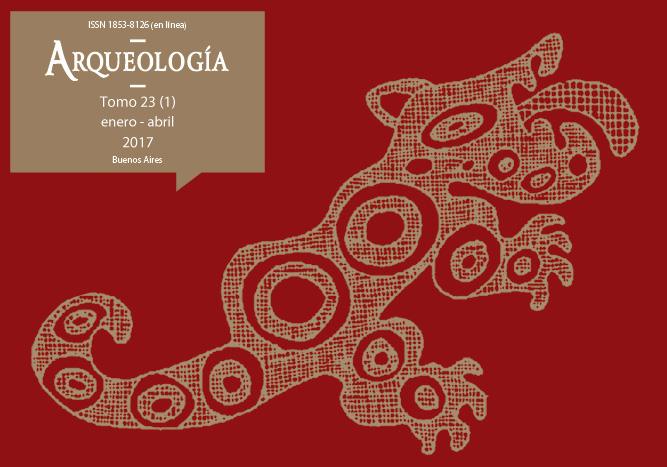Estudios arqueométricos de clavos procedentes de contextos funerarios de las ruinas de San Francisco (Mendoza, Argentina)
Palabras clave:
Clavo arqueológico, Metalografía, Acero esponjoso, Acero pudelado, EDS
Resumen
Los elementos metálicos incorporados en los contextos funerarios coloniales ofrecen información que permite establecer cronologías de fabricación y posibles procedencias de las materias primas utilizadas. En este caso, se aplicaron estudios arqueométricos a los materiales de clavazón que formaron parte de los contextos funerarios registrados en las Ruinas de San Francisco (templo Jesuita desde el siglo XVII al XVIII), ubicado en la Ciudad de Mendoza. El objetivo de los estudios fue responder interrogantes relacionados con su proceso de producción (tecnología, manufactura y materias primas comprometidas para su elaboración). Para tal fin, fue importante conocer la distribución espacial y estratigráfica de los elementos de clavazón y su relación contextual con los entierros humanos registrados. De igual manera se establecieron, a partir de análisis metalográficos, las técnicas de producción y cronología de los elementos analizados, lo que permitió también comprobar si existió algún grado de re-utilización de elementos durante el período analizado.Descargas
La descarga de datos todavía no está disponible.
Cómo citar
Quiroga, M., Chiavazza, H., Lascalea, G., & Gurrito, M. (1). Estudios arqueométricos de clavos procedentes de contextos funerarios de las ruinas de San Francisco (Mendoza, Argentina). Arqueología, 23(1), 45-60. https://doi.org/10.34096/arqueologia.t23.n1.3657
Sección
Artículos
Los autores/as que publiquen en esta revista aceptan las siguientes condiciones:
- Los autores/as conservan los derechos de autor y ceden a la revista el derecho de la primera publicación, con el trabajo registrado mediante Licencia Creative Commons 4.0 Internacional (CC-BY-NC-SA), que permite a terceros utilizar lo publicado siempre que mencionen la autoría del trabajo y a la primera publicación en esta revista.
- Los autores/as pueden realizar otros acuerdos contractuales independientes y adicionales para la distribución no exclusiva de la versión del artículo publicado en esta revista (p.e. incluirlo en un repositorio institucional o publicarlo en un libro) siempre que indiquen claramente que el trabajo se publicó por primera vez en esta revista.
- Se permite y recomienda a los autores/as a publicar su trabajo en Internet (p.e. en sus sitios web personales o en depósitos institucionales), tanto antes como después de su publicación en esta revista, siempre y cuando proporcionen información bibliográfica que acredite, si procede, su publicación en ella. De esta manera, pueden favorecerse intercambios productivos y a una mayor y más rápida difusión del trabajo publicado (vea The Effect of Open Access).



.png)

(1)13.png)






1.jpg)
1.png)
1.jpg)


13.png)
1.png)


(1)1.png)









